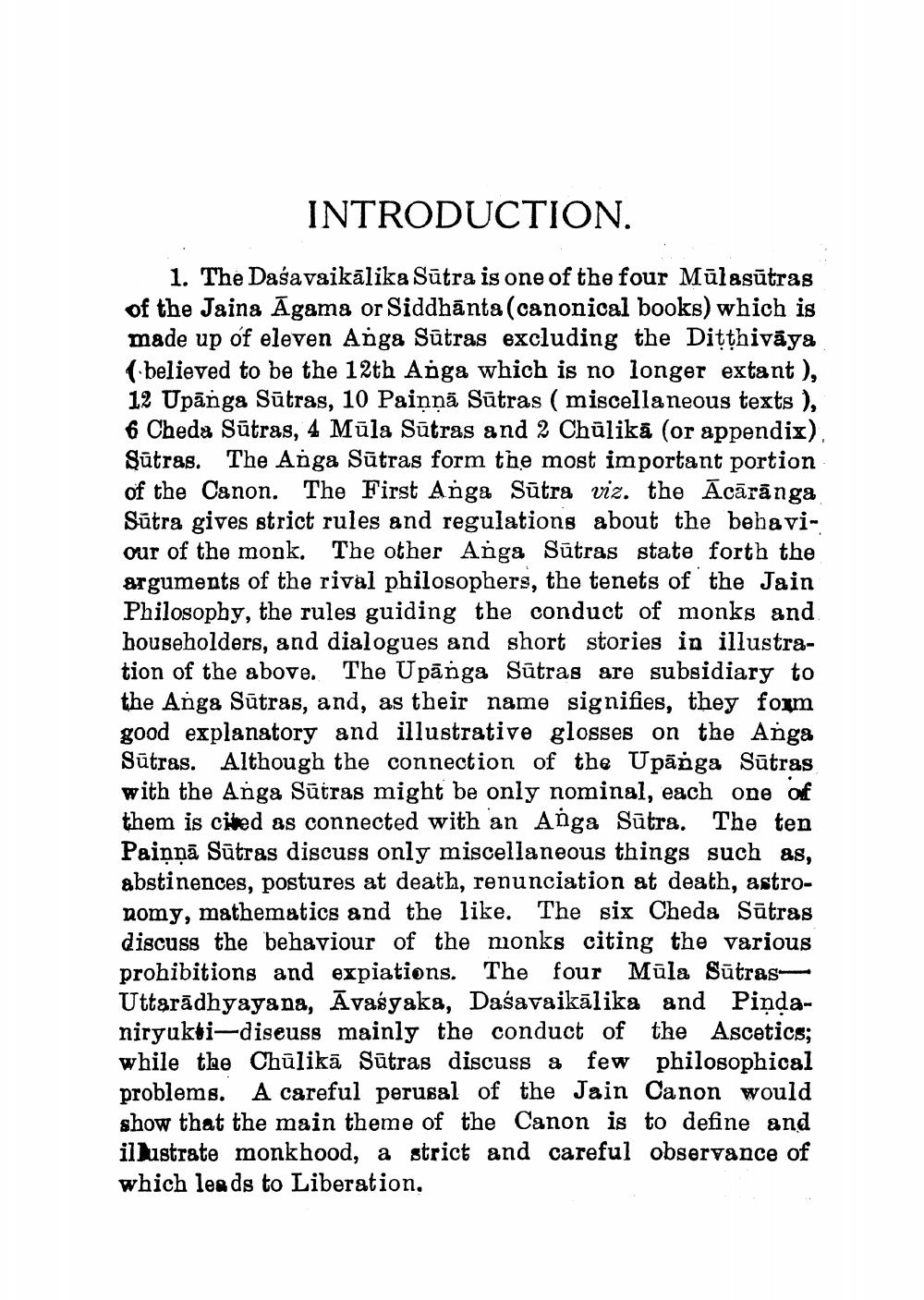________________
INTRODUCTION.
1. The Daśavaikālika Sūtra is one of the four Mulasūtras of the Jaina Agama or Siddhanta (canonical books) which is made up of eleven Anga Sutras excluding the Diṭṭhivaya (believed to be the 12th Anga which is no longer extant), 12 Upanga Sutras, 10 Painņā Sūtras (miscellaneous texts ), 6 Cheda Sutras, 4 Mūla Sūtras and 2 Chulika (or appendix) Sutras. The Anga Sutras form the most important portion of the Canon. The First Anga Sutra viz. the Acaranga Sūtra gives strict rules and regulations about the behaviour of the monk. The other Anga Sutras state forth the arguments of the rival philosophers, the tenets of the Jain Philosophy, the rules guiding the conduct of monks and householders, and dialogues and short stories in illustration of the above. The Upanga Sutras are subsidiary to the Anga Sutras, and, as their name signifies, they form good explanatory and illustrative glosses on the Anga Sūtras. Although the connection of the Upanga Sutras with the Anga Sutras might be only nominal, each one of them is cited as connected with an Anga Sutra. The ten Paiņņā Sūtras discuss only miscellaneous things such as, abstinences, postures at death, renunciation at death, astronomy, mathematics and the like. The six Cheda Sūtras discuss the behaviour of the monks citing the various prohibitions and expiations. The four Mula SūtrasUttaradhyayana, Avaśyaka, Daśavaikālika and Pindaniryukti-diseuss mainly the conduct of the Ascetics; while the Chūlikā Sūtras discuss a few philosophical problems. A careful perusal of the Jain Canon would show that the main theme of the Canon is to define and illustrate monkhood, a strict and careful observance of which leads to Liberation.




